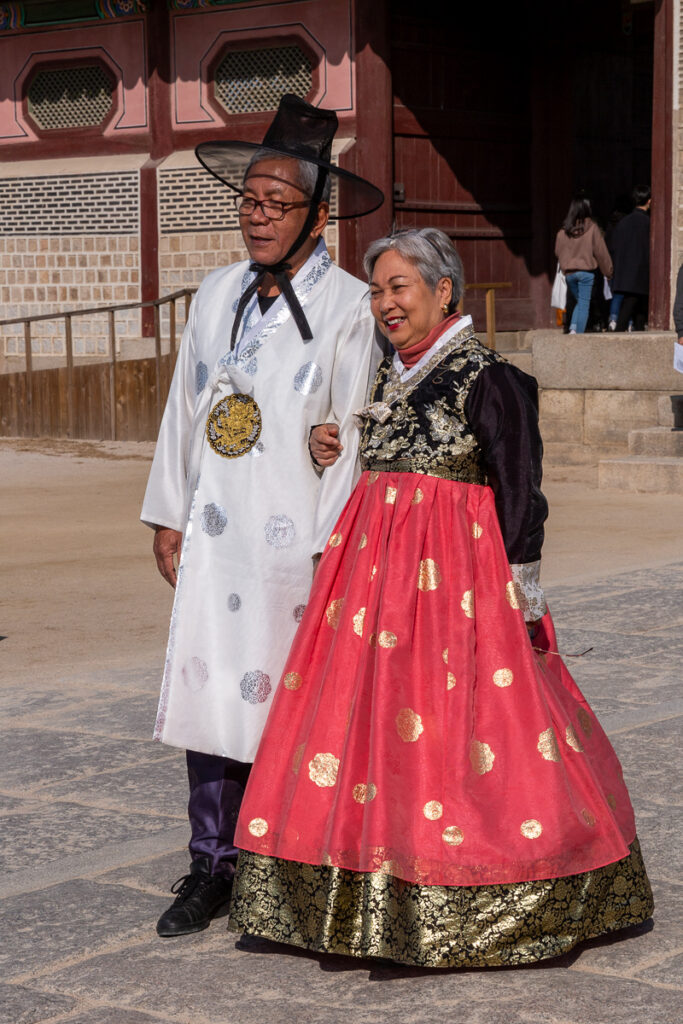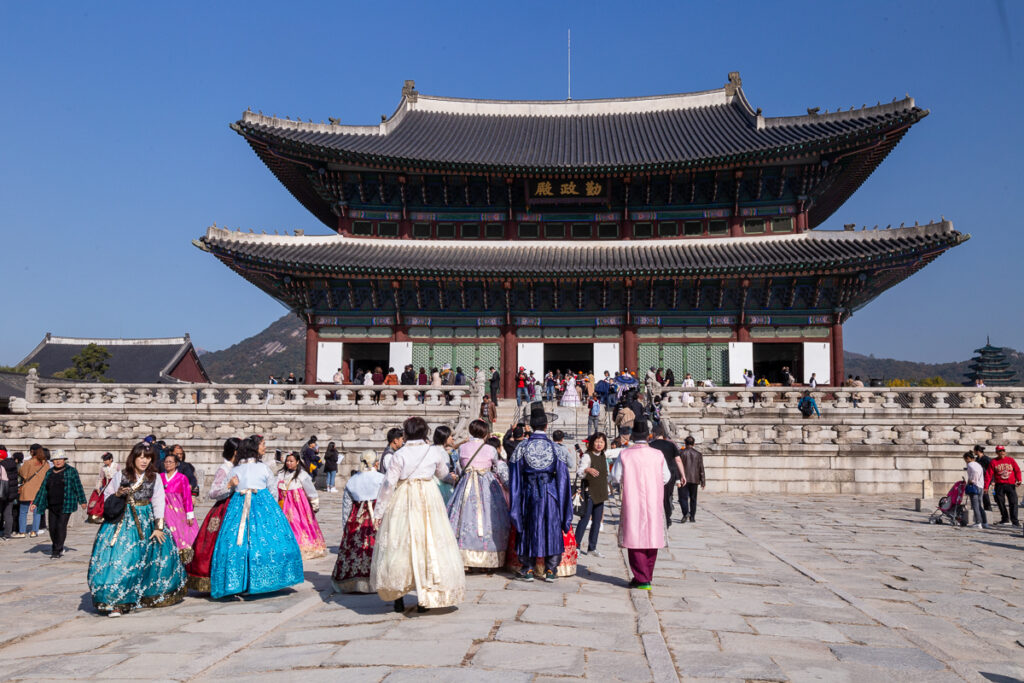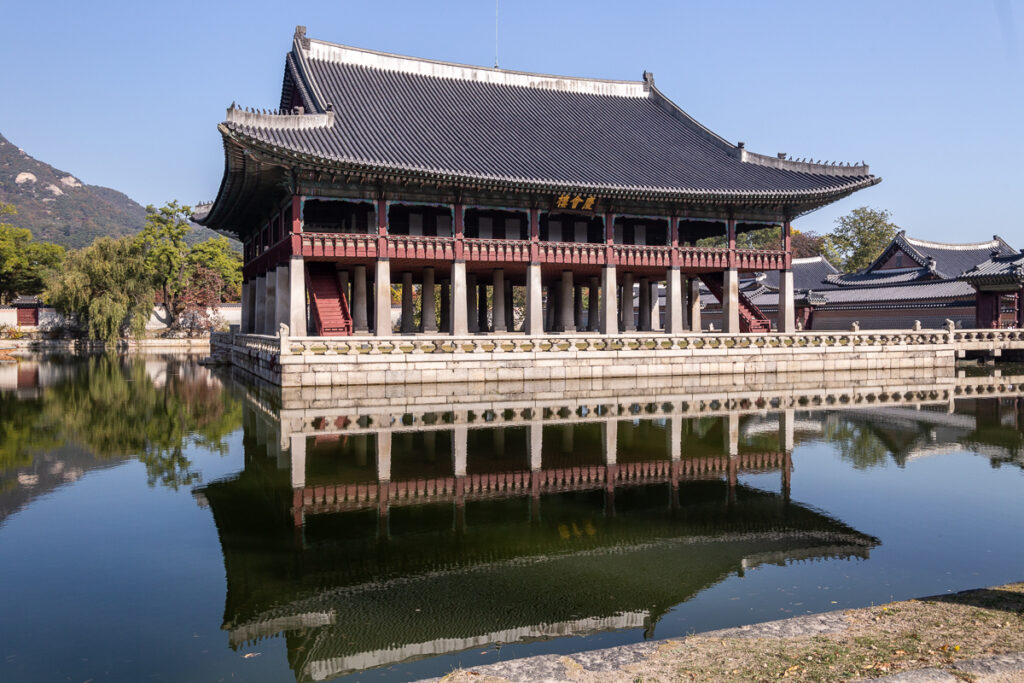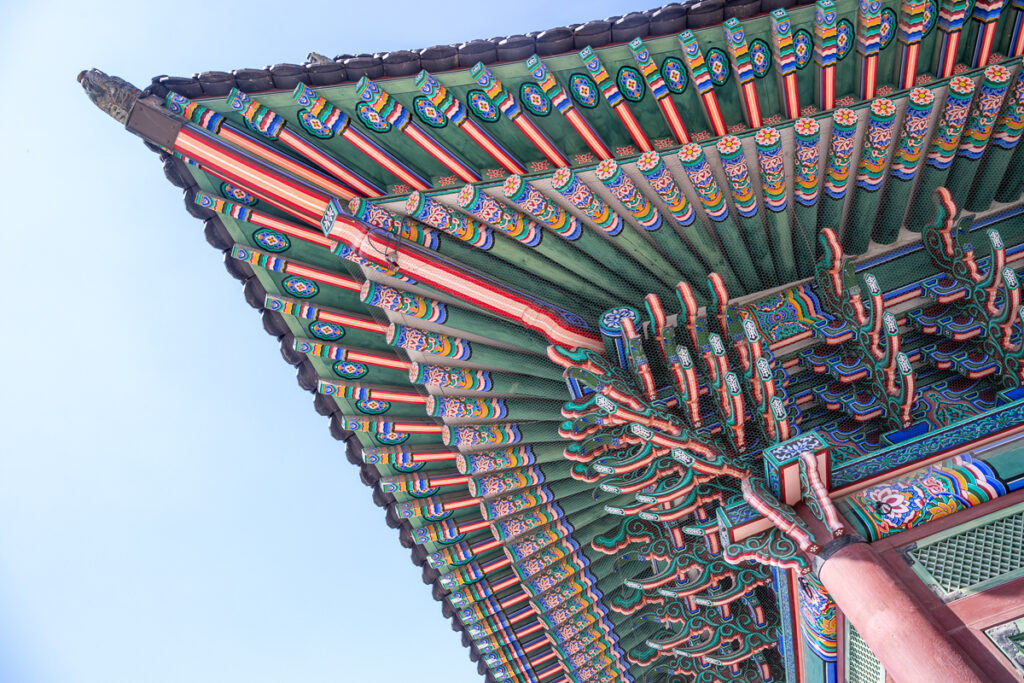We were fortunate to visit on the first day of the Hi Seoul festival, so we got to see part of the rehearsal at the Palace and also the Lantern Festival in the evening, along with other festivities throughout the day. I hope to post a video of the drum rehearsal which was outstanding later.
The Palace faces the Han River and has a mountain at its back. In earlier times no high rise building could be build between the river and the Palace.
Many visitors to the Palace had on native costumes, it was not limited to the young but the elderly also joined in. The costumes were all bright colors with lots of gold embroidery. Another enticement is free admission to those coming in costume.


Drumming – My first video, I aim to do better
The Palace was built in the late 14th Century for the Joseon Dynasty. Most of the Palace was destroyed in the Japanese invasion of Korea in the 16th century.
The grounds originally had 500 buildings and a restoration began in the 19th century continues today. Two hundred and fifty of the destroyed buildings have been reconstructed with a projected completion date of all 500 by 2030.
Some interesting facts – the paint on the buildings originally lasted 100 years but now had to be repainted every 38 as the old method of creating paint has been lost through the centuries.
Royal Banquet Hall – still used today & where Queen Elizabeth was greeted.


Animals on all the rooftops were to protect the Palace…

The painting (right) represented the throne, whenever it appeared throughout Korea, the people knew the king was making an appearance.

We also learned that girls and boys were separated during daytime hours after the age of 7 (hopefully my memory is right on that) according to Confucianism. This applied rule also applied to married couples. So at the Palace there were King and Queen buildings.
The King buildings had one for each season and our guide explained the heating of the winter rooms – which was done by starting a fire to heat the 5 laters of stone under the buildings. The Koreans still use a similar modern version of floor heating today. So none of the beds, tables, etc have legs but are directly on the floor.